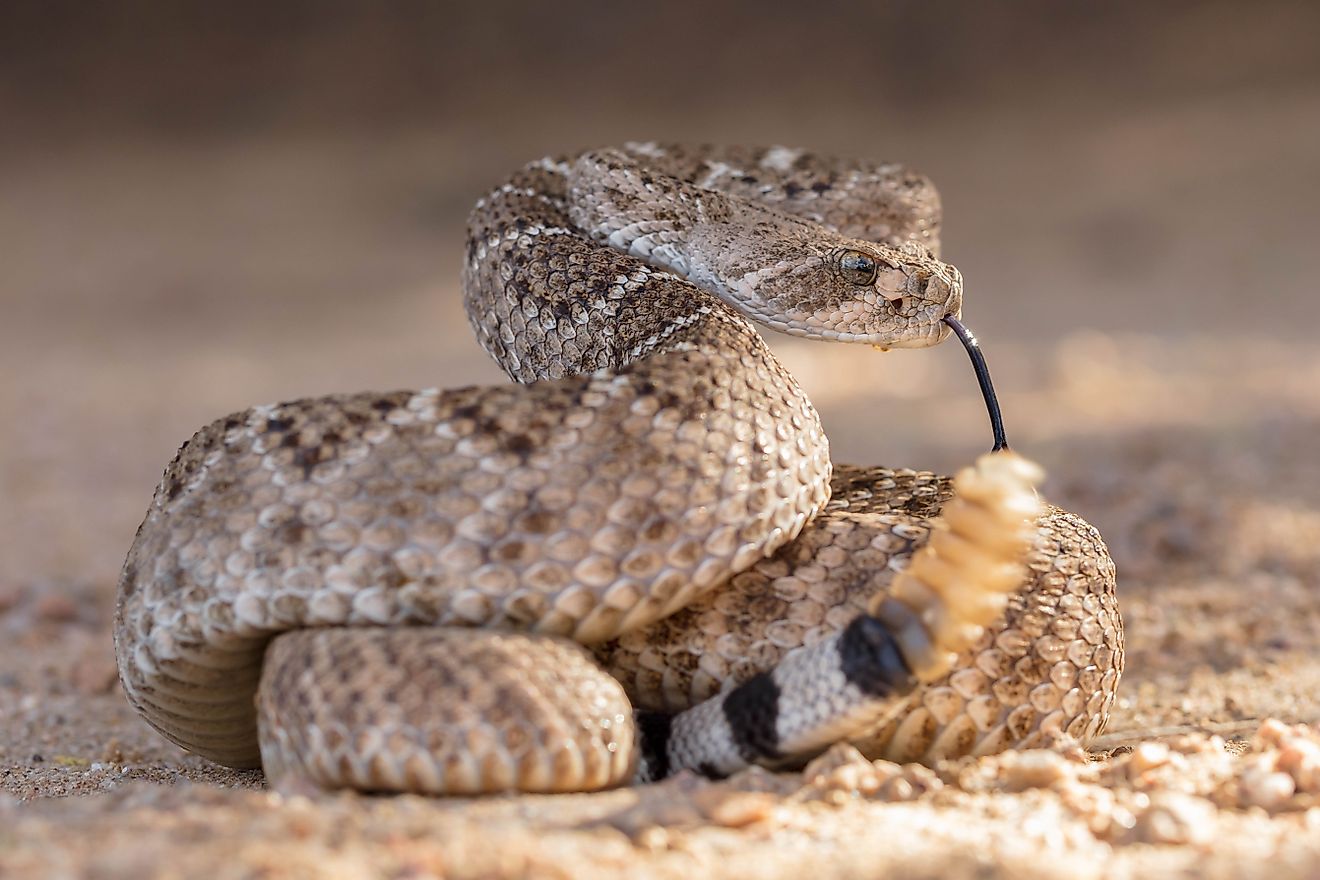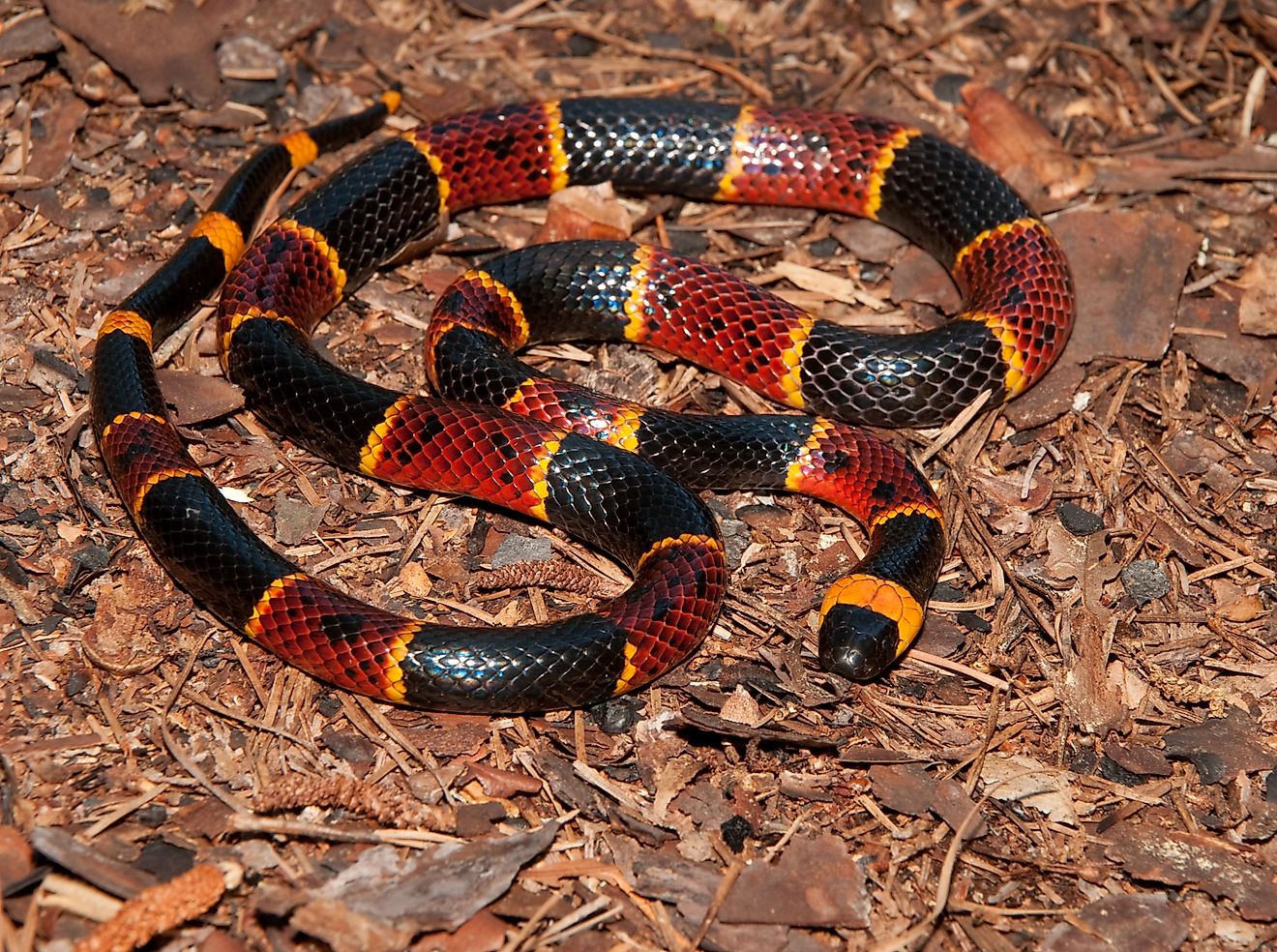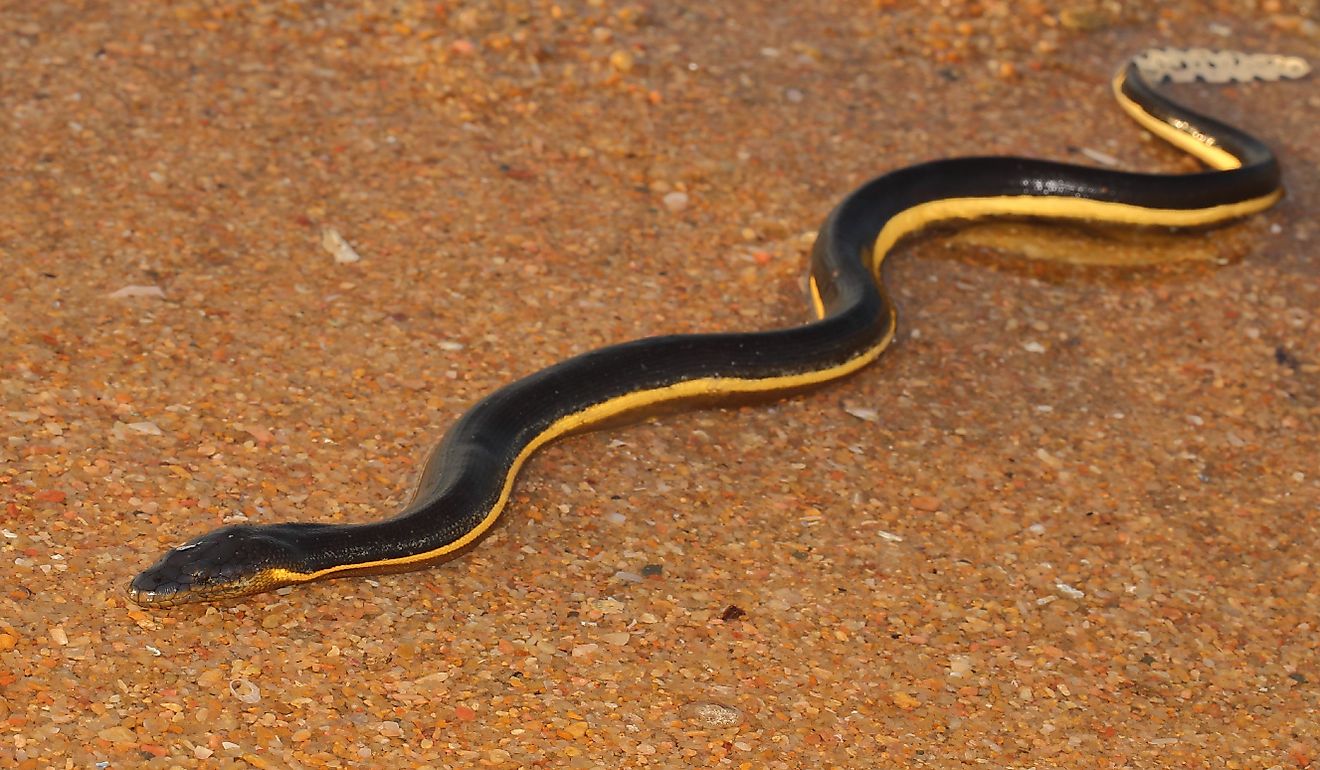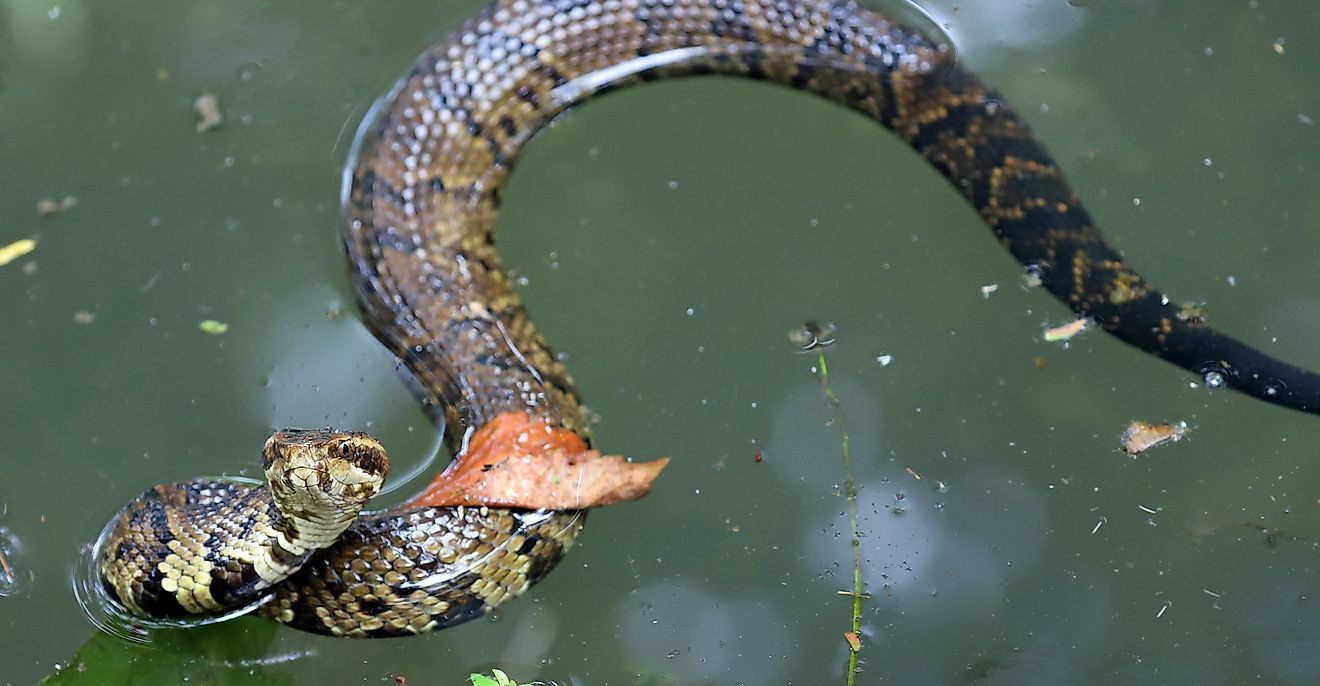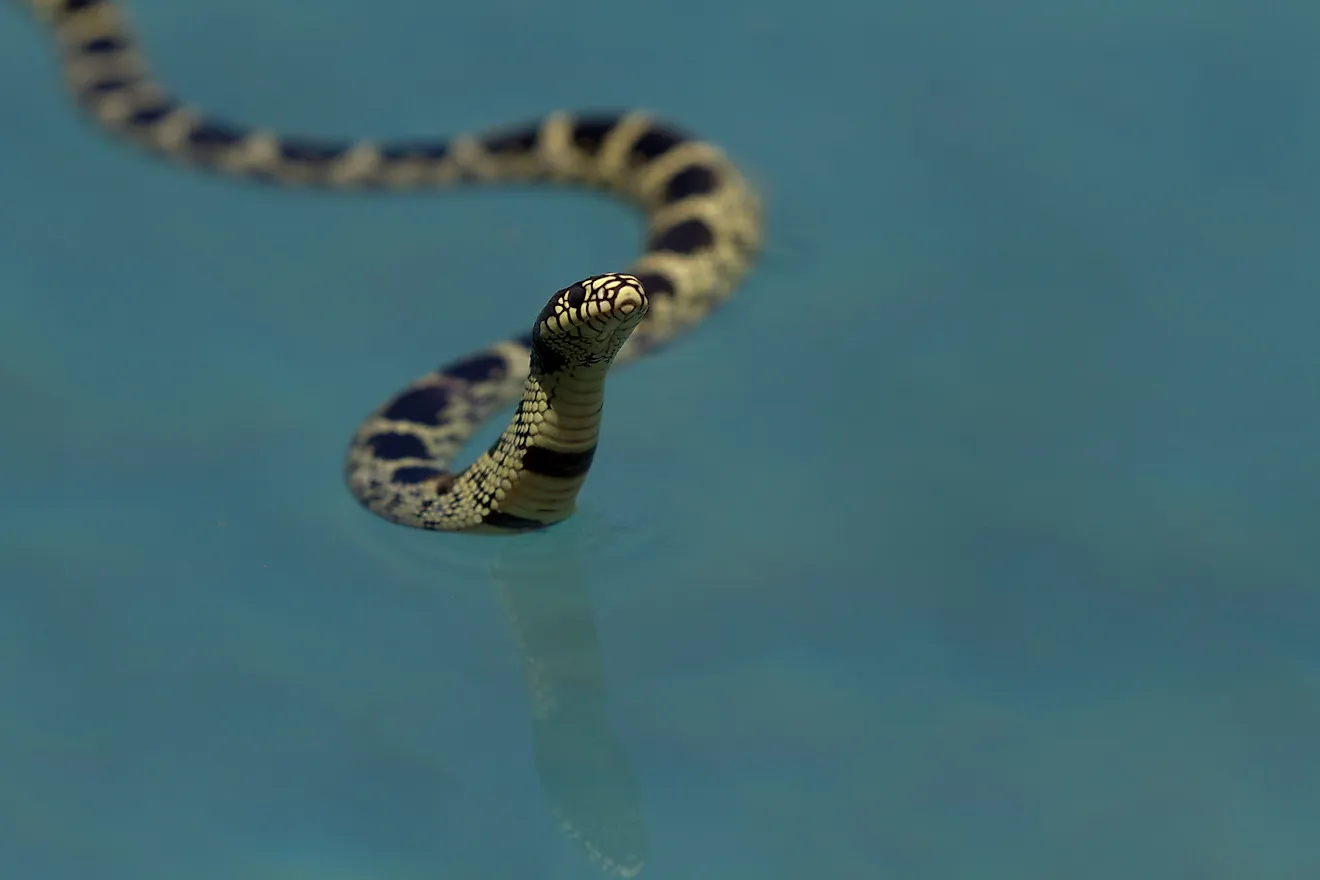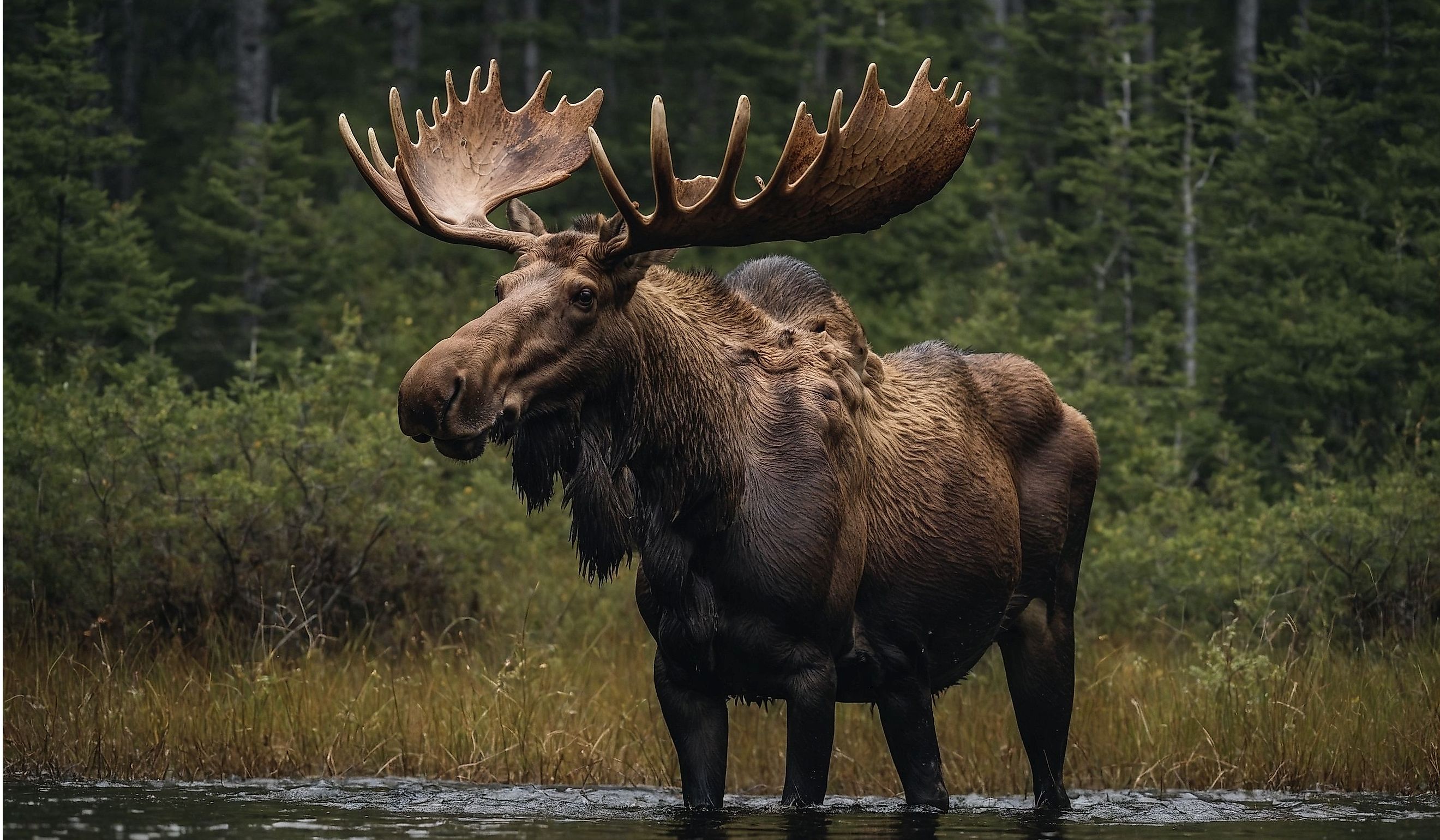
The 12 Deadliest Animals in Minnesota
As the 12th largest state in America, Minnesota is lauded for its beautiful landscapes, encompassing prairie lands, big woods, and boreal forests into one vast ecological system. The Land of 10,000 Lakes, as it is known, hosts over 80 species of mammals, 400 species of birds, 150 species of fish, and a combined 51 species of reptiles and amphibians. Such diversity in ecosystems and fauna is aptly encapsulated in the great state's hockey team, the Minnesota Wild.
Getting lost, spellbound, and engulfed by the state's natural surroundings may come at a cost, as the quest for survival always means that danger is nearby. Whether by provocation or other means, animals are a constant threat to human life—a threat that should never be taken for granted. Within Minnesota lurk some of the nation's most sinister threats—many of which you would never expect. Read on for a list of the 12 deadliest animals in the North Star State.
Mosquitos
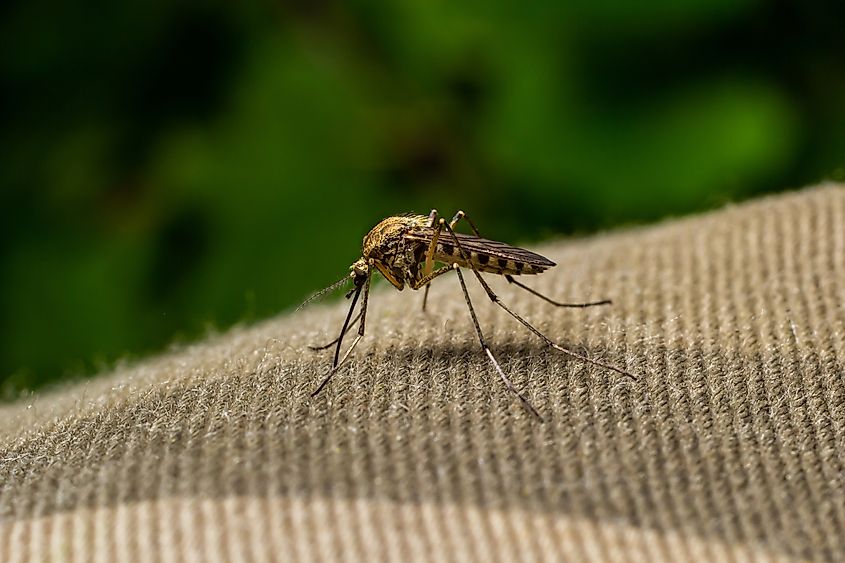
Despite being approximately 1/500 the size of a human, Mosquitoes account for the most deaths worldwide per year of any animal—with estimates ranging between 725,000 and 1,000,000 per year. The Land of 10,000 Lakes provides ideal breeding conditions for the Aedes subspecies, as the still, clean water is ideal for these daytime biters. The Aedes mosquito is among the most aggressive, as these daytime biters prefer to feast on human blood.
Their size, in relation to humans, in addition to their lightweight and flying ability, make them formidable pests, and they adapted for heat, carbon dioxide, and odor detection, making them stealthy and effective hunters. With a mere 24-48 hours incubation period, one mosquito can hatch anywhere from 100-300 larvae at a time. Mosquitos carry diseases such as Zika, dengue fever, and chikungunya, which offer severe threats to humans. However, given Minnesota's relatively short winter and cooler weather, transmission cycles are relatively limited.
Minnesota Timber Rattlesnakes
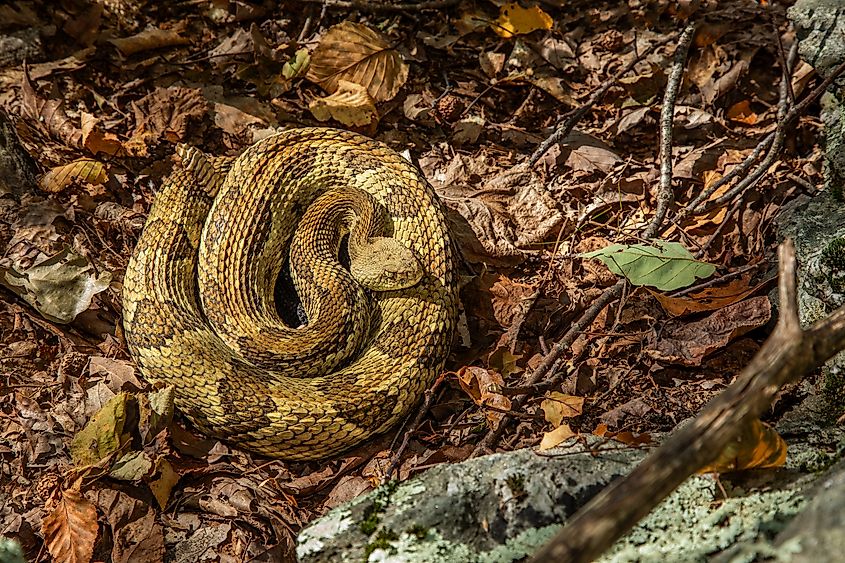
While confined to the southeastern corner of Minnesota, The Timber Rattler - its local moniker - is one of the most potent venomous threats in the state. The Timber Rattler prefers rugged terrain and seasonal forests where grasslands and shrubs are present, which provide shade and coverage. The Timber Rattlesnake prefers smaller mammals such as mice, rats, and squirrels, and they play a vital role in controlling the rodent population.
Although bites are relatively rare due to their mild, non-confrontational temperament, they can get aggressive if provoked by being stepped on or cornered. Their distinctive buzz sounds off a warning to perceived threats, and if you happen to encounter one, it is a good idea to maintain distance. Timber Rattlers' venom contains hemotoxins that destroy tissue while preventing blood clotting, which causes victims to bleed out.
Bees, Wasps, & Hornets
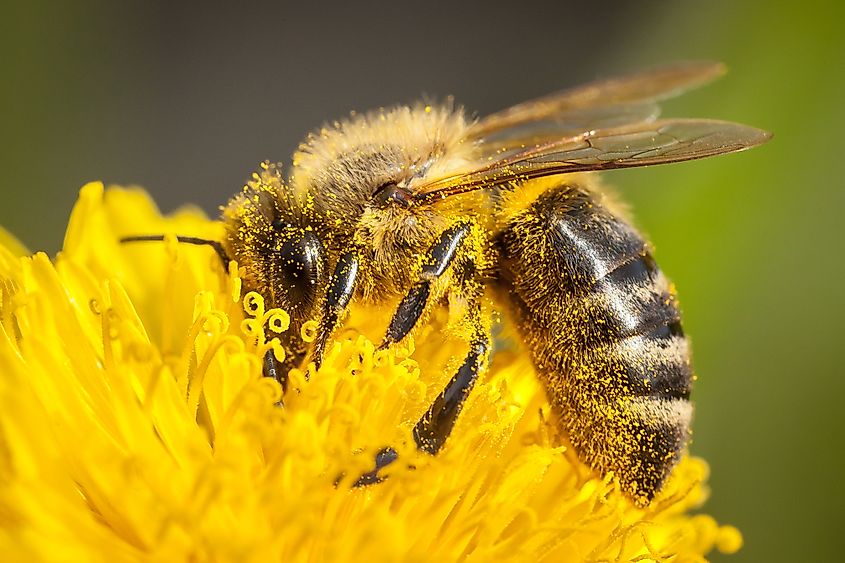
Given Minnesota's diverse ecosystems and floral diversity, the state boasts an environment that is particularly attractive to bees, wasps, and hornets. With over 2,000 native plant species found in gardens and urban areas, these insects have abundant sources of nectar and pollen. Their nesting sites of choice range from fallen logs to cavities in standing trees, while they also prefer man-made structures such as attics, under eaves, wall cavities, and basement dwellings.
Minnesota is home to several variations, with the honey bee, yellow jacket wasp, and bald-faced hornet being particularly aggressive. Wasps and hornets are particularly threatening in the late summer, as they are proactive in defense - and their stings have the potential to cause life-threatening reactions, known as anaphylaxis. Symptoms of anaphylactic shock include hives, itching, swelling of the face, lips, or throat, and breathing difficulties, with stings being a common culprit for hospital visits in the summertime.
Ticks
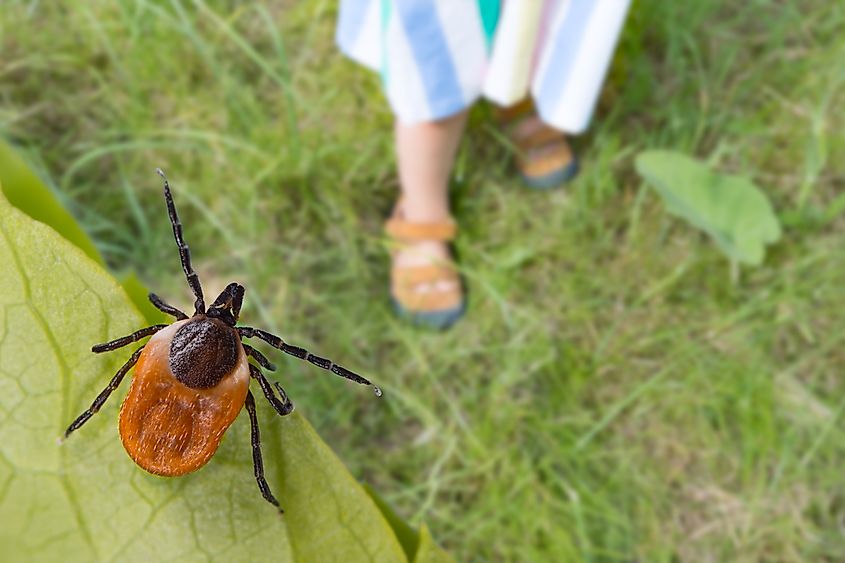
There are two types of ticks found in Minnesota's forest and woodland areas: the Black Legged Tick - also known as the deer tick - and the American Dog Tick. These arachnid pests are highly resilient and known to enter states of dormancy to survive the state's harsh winters. With a preference for areas where there is dense underbrush and leaf litter, ticks are heavily concentrated within these areas of Minnesota.
Although, at first glance, they are unintimidating, a look under the microscope may easily change this perception. With its sinister magnified appearance, the tick is an apex parasite outfitted with the ability to detect carbon dioxide to identify hosts to feed off of. These animals are obligate blood feeders, meaning they require blood to grow and survive. Once attached to their host, they feed for several days - and, in doing so, maintain a threat as bacteria and disease vectors.
The Black-Legged Tick, in particular, is commonly associated with transmitting Lyme disease, which is responsible for multiple rashes, heart problems, and chronic neurological issues. Ticks are also associated with a host of deadly bacterial infections, such as Anaplasmosis, Rocky Mountain Spotted Fever (RMSF), Ehrlichiosis, Tularemia, and many more.
Black Widow Spiders
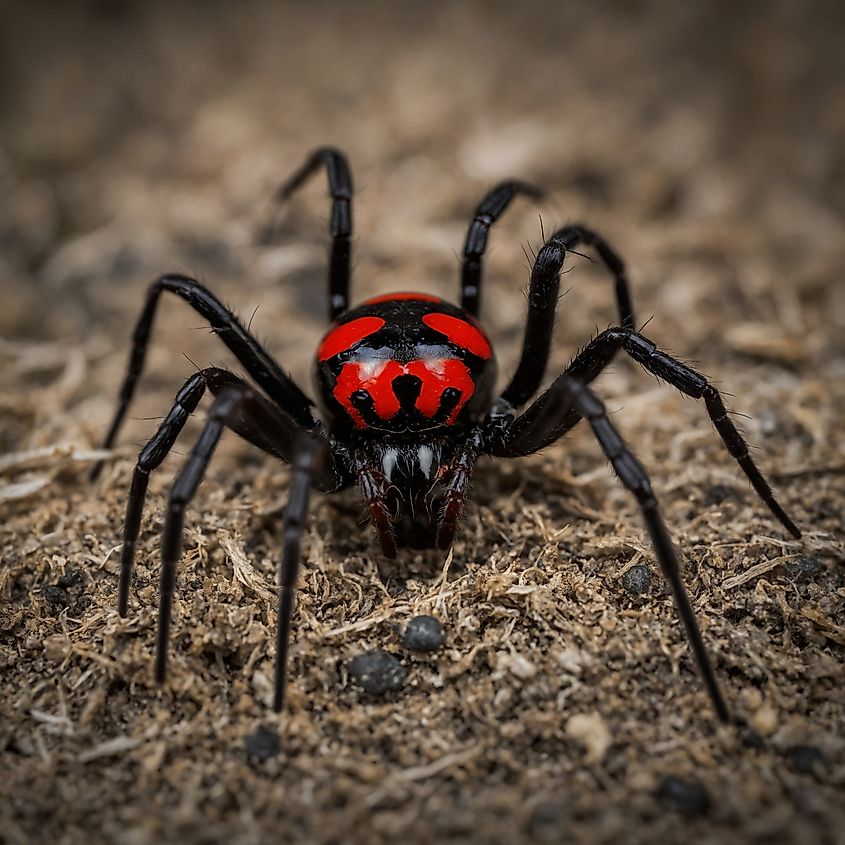
Black Widows carry ominous connotations worldwide for their cannibalistic mating ritual, potent venom, and red hourglass insignia, which mark females. However, in spite of the fear that they inspire, their presence indicates a healthy ecological system, as they control the overpopulation of flies, mosquitoes, and beetles. Normally found in dark, sheltered areas, such as woodpiles, sheds, basements, garages, and outhouses, these arachnids are also known for their highly intricate and effective webs.
Despite their reputation as highly venomous predators, Black Widows are normally shy and subdued - unless provoked. In reality, they would rather play dead when threatened and don't actually seek out victims to bite. Conversely, their venom does contain a neurotoxin that causes severe pain, muscle cramping, hypertension, sweating, and even paralysis of the diaphragm. An interesting note is the sexual dimorphism that exists between male and female black widow spiders, with the males being smaller and having a brown hue. Although bites are rare, an encounter with the Black Widow Spider can easily end you up in the emergency room or worse.
Lynx

The lynx occupies Minnesota's northern eastern edge, near the Canadian border, within dense, boreal forests, such as The Superior National Forest. The venue provides this specialized predator with all the prey that it requires, with its meal of choice being the snowshoe hare. The lynx is highly adapted to nordic environments, equipped with large, furry paws, with excellently camouflaged brown spotted fur.
This stealth hunter is a silent stalker, which is necessary for the tranquil stillness of the boreal forest during all seasons. Although these solitary and majestic hunters generally avoid humans, they are still highly territorial top predators. Their stalking and hunting ability, sharp retractable claws, powerful jaws, and piercing teeth all make them very capable of neutralizing a perceived threat. Though a lynx would rather avoid confrontations with humans, and they are unlikely to consider them as prey, this is not to say that it would not attack if it felt threatened or provoked in any way.
Bald Eagles
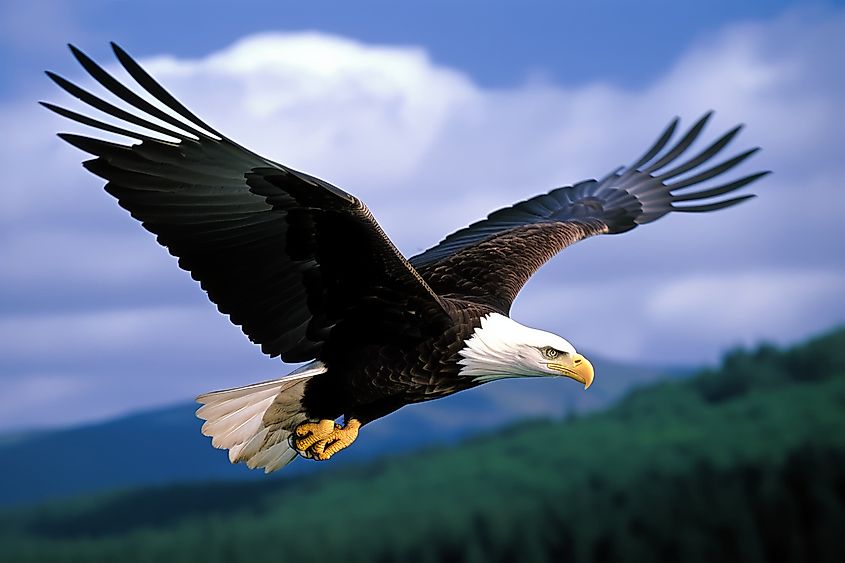
Since 1972, the Bald Eagle has been the symbol of the United States, representing courage, strength, and freedom. These powerful, exceptional fliers can soar through the air at speeds as high as 30-35 miles per hour - while executing dives at 70-100 miles per hour. Armed with powerful talons, bald eagles possess a grip force of up to 1,000 PSI, making them very capable of causing serious harm to humans and prey.
As an apex predator, the eagle is also a monogamous nester, and couples build huge nests - up to 13 feet deep by 8 feet wide - to raise their hatchlings. These nets, also known as aeries, are found in tall trees, cliffs, or man-made structures such as transmission towers. Bald eagles are exceptionally territorial - especially when in defense of their nests. Although attacks on humans are rare, the Bald Eagle's temperament, hunting skills, and talon strength make them a potentially fatal threat under the wrong circumstances. Accidentally coming into proximity or disturbing an eagle's nest could spell severe danger.
Coyotes
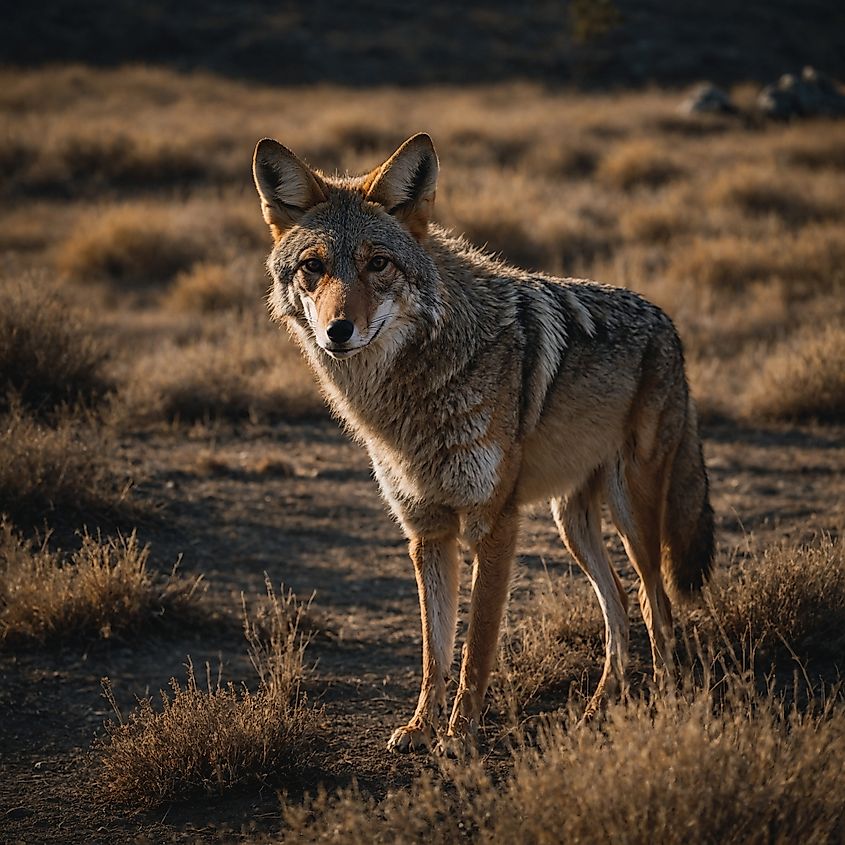
The highly energetic, intelligent, and adaptable coyote roams throughout Minnesota in urban and rural areas. Its exceptional survival instincts make it equally comfortable in prairie land as in forests or even cities. With an omnivorous diet, coyotes feast on small mammals, birds, and fruits while even scavenging on garbage when necessary.
As pack animals, coyotes occasionally hunt as families or groups, making them dangerous to encounter. They are cunning, highly agile, and have sharp, powerful claws and teeth. They are known to stalk their prey, preferring the shade of dawn, dusk, and nighttime.
Although coyotes prefer rabbits, birds, insects, and carrion, they are indiscriminate, opportunistic feeders. If their voyage for food brings them to urban areas, they may attack humans, cats, or smaller dogs. It is advisable to fence off yards and avoid leaving pets unattended at night, or they may be at risk of one of the most dangerous threats in the state.
Moose
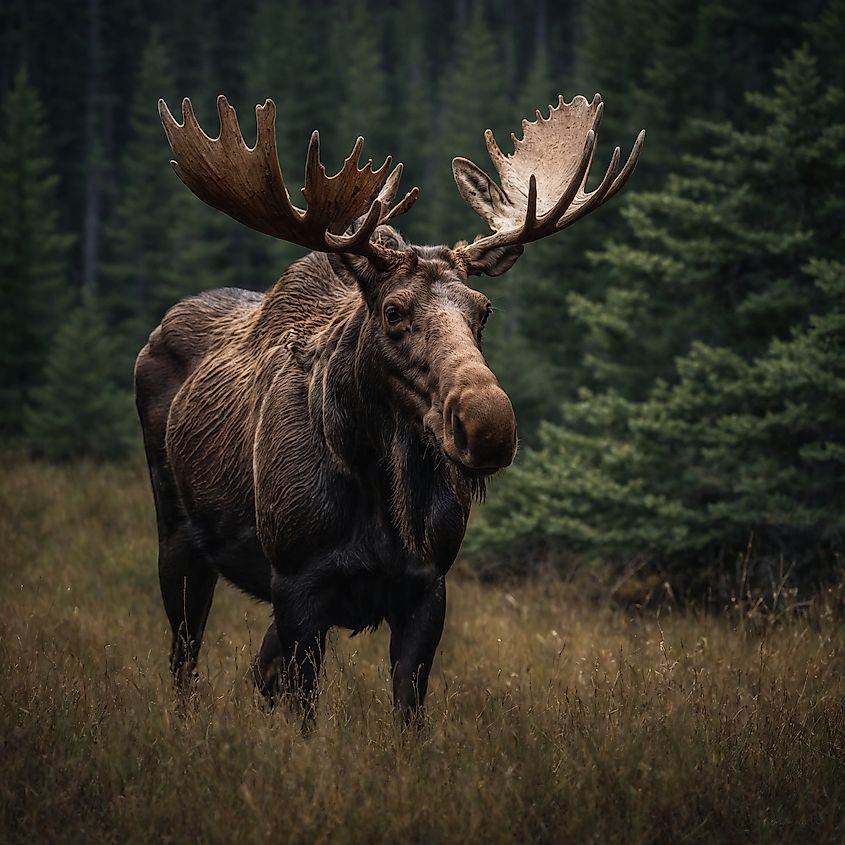
As North America's second-largest herbivore, the Moose's preferred habitat is boreal forests rich in coniferous trees such as fir, pine, and larch. Moose are the deer family's largest member, with bull moose weighing between 1,000 and 1,500 pounds and cows ranging from 800 to 1,200 pounds. Moose possess a relaxed, tranquil temperament - except during the rutting or fall mating season.
The rutting season sets bull and cow moose into action while in pursuit of a mate. They normally roam to establish territories, engage in battles to establish dominance and engage in the courtship of a mate. This enhanced movement makes them more of a liability as they cross roadways to get from one forest to another. It is imperative to move with caution when driving through territories inhabited by Moose - due to their size; they pose a critical risk if a collision were to occur.
Bull moose are distinguished by their massive antlers, which are made of bone. It is always best to maintain ample distance and not to assume that because Moose are herbivores, they are not territorial. They are known to charge when provoked, and given their sheer size and strength, it would be the equivalent of a locomotive barreling at you. Their sheer size, bulk, and mass make them one of the most terrifying gentle giants in the land.
Timber Wolves
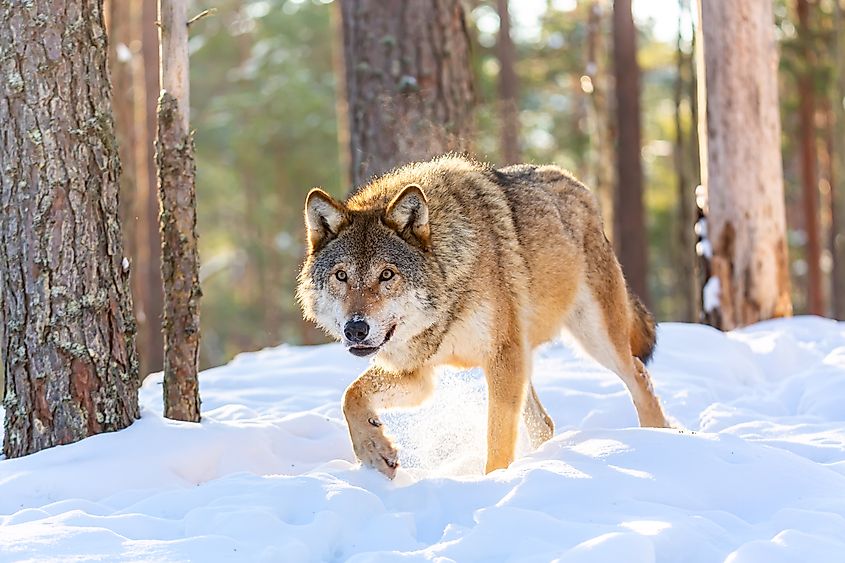
Minnesota is home to the largest population of Timber Wolves in the United States, with estimates ranging between 1,000-2,000 wolves. Also known as the Gray Wolf, these canines are the largest members of the species, with males growing as large as 175 pounds. As apex predators, Timber Wolves are pack hunters who are led by an alpha pair and their offspring, who control 25 to 150 square miles depending on the dominance of the pack and the availability of their prey.
Timber Wolves prefer to feed on larger mammals, white-tailed deer, beavers, and even Moose at times. They also target smaller mammals such as hair, beavers, and other rodents. Despite being efficient hunters, Timber Wolves are not above scavenging for carrion, playing scavenger whenever necessary. However, with a voracious appetite, this carnivore plays a vital role in controlling the over populations and maintaining ecological balance.
Timber Wolves are recognized for their majestic aura, and their fierce beauty is a true representation of the Minnesota wilderness. They are normally as weary of humans as we are of them and do not typically exhibit aggressiveness unless provoked. Despite this, their fearsome reputation is well-earned, and their strength, numbers, and hunting tenacity make them a perennial threat.
Black Bears
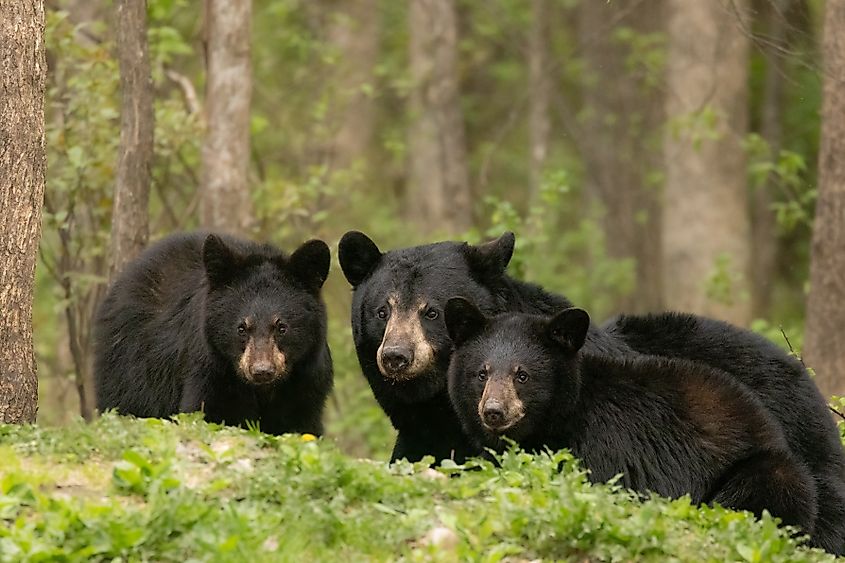
As North America's fourth largest Bear, black bears are the only bears within the state of Minnesota, and they are scattered throughout. Like many on this list, their natural habitat is dense forests with abundant coniferous and deciduous trees. Their omnivorous diet contributes to their massive size, as they can reach up to 6 feet tall and weigh between 150 and 500 pounds.
As hibernators in the winter months—typically from October until April—the black Bear requires a high caloric intake during its waking hours. It freely roams in human-inhabited areas and, like Timber Wolves, is known to scavenge despite being an apex predator. Its need for sustenance and affinity for human food bring it closer to cities, homes, family properties, and businesses.
Black bear attacks occur under two circumstances: when they are startled and caught off guard and when a mother feels her clubs are threatened. A startled black bear will normally flee, but this is not always the case. As territorial creatures, their size, strength, and ferocity exponentially increase their threat level.
White-tailed Deer
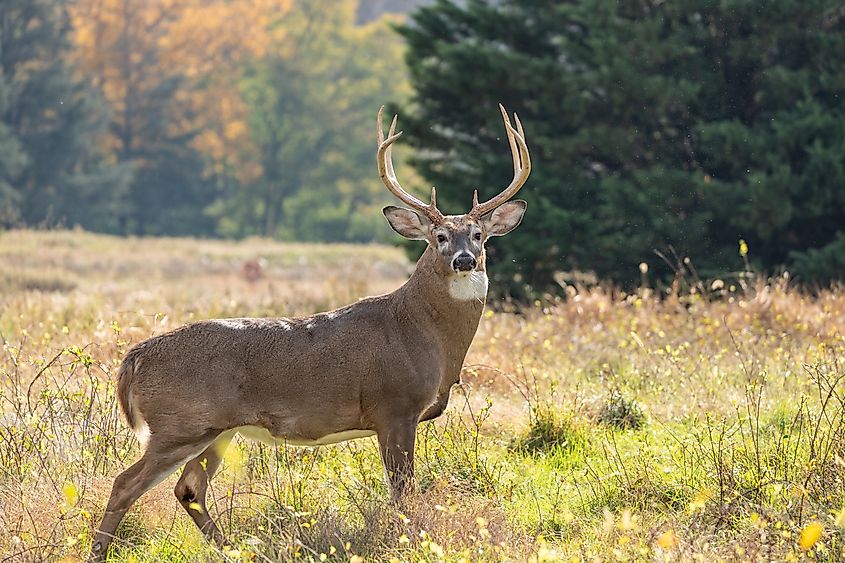
The most unique threat on this list, the white-tailed deer are recognized as beautiful, peaceful, and even docile herbivores. They are the most common large mammal in the state, with an estimated population of one million distributed throughout Minnesota. Buck, or male deers, range between 150 and 300 pounds, while does, or female deers, fall between 90 and 200 pounds.
Does and their cubs primarily move in herds, while bucks are solitary most of the year. Their diet of leaves, twigs, fruits, nuts, and agricultural crops takes them from forests to pastures to woodlands in the winter. Deers become even more active and mobile between October and early December as the "rutting" or mating season begins. This increased activity and movement becomes a major potential hazard for humans, as deers utilize roads to cross from one venue to another.
Within Minnesota, deers account for a staggering 2,000 annual collisions, which makes them a major indirect threat to human life. As the rutting season coincides with the winter months, where there is snowfall and ice-covered roads, it can never be emphasized enough to drive with caution and to be extremely mindful of the potential threats. Although their actions are not necessarily intentional nor malicious, their numbers and population density throughout the state make them exceptionally more dangerous.
Minnesota's natural landscapes and beauty make it an outdoor lover's dream, with ample activities to enjoy all year round. This midwestern prairie oasis offers diverse landscapes and camping sites, and as the Land of 10,000 Lakes, some of the best opportunities for anglers in the nation. However, these opportunities do not come without risks, as this ecosystem supports various threats throughout The North Star State. From the smallest tick to the largest Bear, the danger is always close within the wild.
